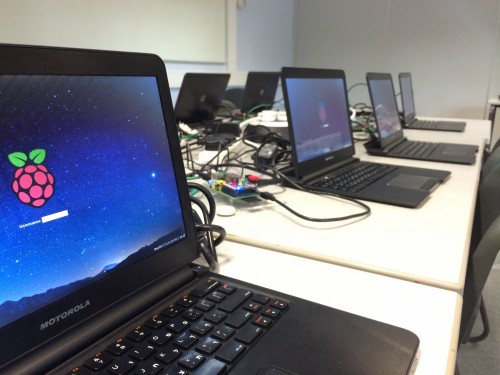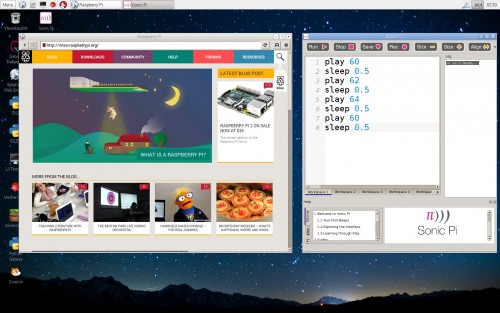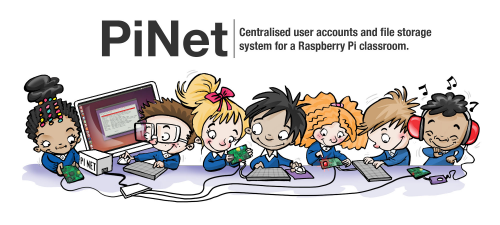| The Kindle is the most popular e-reader of all time and e-ink screens are what makes the technology possible. Lately, dedicated reading devices have been seeing diminished sales and e-paper is being employed on keyboards, digital signage and now fashion. A new Indiegogo project started by Lithuania-based iShüu Technologies is betting that e Ink is perfect for shoes. You can control the patterns and colors via a mobile app and automatically change the color, based on your outfit. They also have tangible customization options, such as bows and flows. “The Volvorii’s clean, elegant, sturdy design brings gravitas, respect and formality in an unmistakable way,” the campaign page reads. “Whether you are a CEO at the apex of your industry or a prospective intern who got it as a graduation present going for your first interview in the corporate world, the Volvorii will carry you with grace.” For the girl who has everything you can pick it up from the campaign page for $249 plus shipping.
The Kindle People Wear on Their Feet is a post from: Good e-Reader |
A Semi-automated Technology Roundup Provided by Linebaugh Public Library IT Staff | techblog.linebaugh.org
Monday, March 23, 2015
The Kindle People Wear on Their Feet
Create Photo Collages With Layout App From Instagram
|
When you consider the blend of photographs and mobile technology, chances are good that thoughts of Instagram are not far behind. Designed to be an easy way to share your favourite images with friends and family, Instagram is easy to use and feature-rich –unless you wanted to create a collage without using a third-party app… at least until now! Instagram has launched a new app called Layout that lets you brings groups of photographs together a Layout was only made available for iOS today, but we have been assured by Instagram that an Android version will be ready soon!
Create Photo Collages With Layout App From Instagram is a post from: Good e-Reader |
Free! Inspires new Film and Manga Based off of The Original Light Novel
| While many viewers were tuning into the highly popular Free! Eternal Summer special event on Sunday, it was revealed that High Speed!, Kōji Ōji and Futoshi Nishiya’s light novel that originally inspired the great hit anime Free! -Iwatobi Swim Club anime, will be getting its own movie! The movie will be entitled High Speed! -Free! Starting Days-. The animated film will open throughout Japan on December 5th. Kyoto Animation has also confirmed that a manga adaption of High Speed! Has been green-lit for production. The manga will be drawn by the talented Shiori Teshirogi (Saint Seiya: The Lost Canvas – Meiō Shinwa) The teaser website for High Speed! -Free! Starting Days- film has also confirmed that Nobunaga Shimazaki, the voice of Haruka Nanase, is returning to to the Free! Television sereies! While the Free! Series centers on Haruka and the other swim club members in their high school years, High Speed! Follows them during their time in Middle school. The second volume of the light novel was shipped last July. Ever since the popular anime Free! First aired back in July 2013, the show has been making huge splashes with it’s fanbase, so fans can now rejoice that the anime will return to us once again in a movie format! Free! Inspires new Film and Manga Based off of The Original Light Novel is a post from: Good e-Reader |
Raspi-LTSP is now PiNet: easily manage a Raspberry Pi classroom
| Helen: Over the past year and a half, Raspi-LTSP has become very popular as a simple and easy-to-set-up way of managing Raspberry Pi users and files in a classroom setting. Today its 18-year-old developer Andrew Mulholland launches PiNet, the new incarnation of this very valuable, free, open source project. He’s written us a guest post to tell you more about it.
For nearly two years now, I have been working on RaspberryPi-LTSP. The goal setting out was clear: a simple, free and easy-to-use system for schools that allowed them to manage their Raspberry Pis more easily. So today I am proud to announce PiNet, the replacement for RaspberryPi-LTSP. The idea for PiNet/Raspi-LTSP was spawned out of a workshop I was teaching two years ago in a local primary school. The workshop ran over two days and I had forgotten to install a piece of software on all the SD cards before cloning them. I also had somehow to remember which student's work was on which SD card so I could hand it out to them the next day. Logistically, managing it was a bit of a nightmare! And I only had one class of kids to worry about. How can you manage students' work when you have perhaps hundreds of different students using a set of Raspberry Pis in a week? Does each student get assigned her or his own SD card? And what happens when those SD cards need to be updated with the most recent software update? After many (many) hours of work researching possible solutions, I came up with a proof-of-concept script. The script used LTSP (Linux Terminal Server Project) to build a virtual Raspbian operating system on a server, then let Raspberry Pis network boot off it. I released this on GitHub back in September 2013 not expecting much to come of it. Rather surprisingly, people slowly started playing around with it, I started getting emails with new ideas and I discovered there was an interest in the project.  A PiNet classroom, using Motorola lapdocks to provide display, keyboard and trackpad 200+ commits and 3000+ lines of code later, the feature list has grown after a huge amount of feedback from educators right across the world. PiNet's features include:
PiNet is a replacement for Raspi-LTSP, not an upgrade, so if you're already running Raspi-LTSP, you'll need a new installation to get PiNet running on your server (PiNet will automatically update your SD cards the first time you boot up your Raspberry Pis after installing it, so you don't need to make any changes to those yourself). To make everything as easy as possible, a migration utility has been included in every Raspi-LTSP release since November to allow you to migrate user data and files to PiNet; read the migration guide for help doing this.  The Raspberry Pi desktop with PiNet is like the one you're used to Here are some of the things that other people have said about PiNet/Raspi-LTSP:
PiNet is already used across the world in over 30 different countries. To give it a go in your school, all you need is an old computer, a router and some networked Raspberry Pis! To get started, head over to the PiNet website at http://pinet.org.uk/ and hit Get Started! |
Amazon Makes it Easier than Ever to Leave a Review
|
But Amazon launched a new way to leave a review through prepared choices in drop down menus. This feature begins with a simple three-answer question on the plot of the book: was it predictable, did it have some twists, or was it completely surprising. Answering that question opens up more drop downs about the character development, the pacing, and more. Unfortunately, there’s no drop down menu for the quality of the writing, the quality of the editing, or more basic attributes of the book. These would apparently go in the provided space where the reader can type his own thoughts on the book. Not all books have the drop down review treatment at this time. Obviously, the questions that were offered don’t apply to non-fiction titles, for example, and several nonfic titles I looked at don’t offer any other drop down elaborations. One of the chief concerns with this type of review process was raised by Henry Baum of Self-Publishing Review, and that is the canned response feeling of these reviews which will possibly lead to less informative (and therefore, less helpful) reviews. As you can see from SPR’s take on the drop down review process, Baum was offered far more drop downs–including the options to comment more than once on the author’s writing ability and the quality of the book–than I was on the twenty or so titles I searched through this drop down process. Even the self-published horror titles I inspected didn’t give me the option to select an answer pertaining to violence, sexual content, or other thematic elements. If Amazon truly wants to encourage an atmosphere of dialogue on books and support readers’ efforts to leave a review, however, their first priority should be to make the process of inputting opinions more streamlined. Currently, a consumer goes to the sales page for the book after even remembering that he should review it, clicks on the number of reviews, then clicks on the option to see all the reviews, then clicks on Write a Review. All of this is after scanning the sales page looking for (and not finding) a giant button that simply says, “Leave a review.” Interestingly, the top of the screen will tell a consumer in rather small letters that he has already purchased the item, and that would be an excellent place to point out that a review is only one click away.
Amazon Makes it Easier than Ever to Leave a Review is a post from: Good e-Reader |
URL: http://goodereader.com/blog/e-book-news/amazon-makes-it-easier-than-ever-to-leave-a-review
Spring break reads for travelers and staycationers alike!
| Who doesn't look forward to Spring Break? After spending all winter cooped up in the cold and snow, it is great to have the opportunity to relax and enjoy that book that we've been trying to read, maybe with our toes in the sand if we're lucky. It's a time to kick back and forget about the real world for a while, so what's a better way to do that than with some of these great titles. With everything from light beach reads, to the most talked about non-fiction, to guides on how to make the best umbrella drinks, even if you are staycationing this year, unwind with these titles today! 
Add these great Spring Break Reads to your collection today and provide your users with some great titles to escape the daily grind even if they aren’t traveling at all!
Meghan Lindenberger is a Collection Development Analyst at OverDrive, and will be spending her Spring Break on the Lake Erie coast. |
URL: http://feedproxy.google.com/~r/DigitalDistributionBlogOverdrive/~3/1WJX8amgnSU/
Boyue T62 vs Energy Sistem PRO
| The massive new trend in e-readers is a vanilla version of Android, which allows you to install your own apps. This is a boon for serious readers because you aren’t locked into a specific ecosystem, you have the freedom to use whatever bookstore you want or just play a rousing game of Words with Friends. Today, we look at two of the latest flagship e-readers to see how they stack up against each other. The Energy Sistem PRO and Boyue T62 both have a six inch e-Ink Pearl HD display with a resolution of 1024×758 pixels. They also have a touchscreen, which makes it easy to click and navigate around the UI or just simply flip the pages in your favorite e-Book. It also incorporates a front-lit screen that allows users to read in the dark. Underneath the hood is a ARM Cortex A9 1.0Ghz dual core processor and 8 GB of internal memory. They both have the option to expand the memory up to 64GB with a SD/SDHC card. You can listen to music via the 3.5mm headphone jack, perfect for audiobooks or music. These e-readers are very much akin to each other on the hardware level, but Boyue goes the extra distance to give Chinese users a very viable manga option and online e-reading solutions.
Boyue T62 vs Energy Sistem PRO is a post from: Good e-Reader |
URL: http://goodereader.com/blog/electronic-readers/boyue-t62-vs-energy-sistem-pro
Make Your Secondary Computer Screen a 13.3 Inch e-Ink Monitor
| People are attracted to secondary screens for their home computing setup. It allows you to multitask effectively and allows for some serious customization. e-Reader lovers know that e-paper is very easy on the eyes and great for long term reading sessions. Is it viable as a true secondary screen though? DaSung is hoping yes. The 13.3 Inch e-ink screen was developed exclusively to function as a secondary display. It is utilizing an e Ink Fina screen that has a resolution of 1600 x 1200 and 150 PPI. If you never heard of this before, it is currently being used on the Pocketbook CAD and Sony DPT-S1 Digital Paper. Basically, Fina is a glass based TFT technology that uses a very thin glass substrate to deliver products that are much lighter and thinner than what is possible with standard LCD displays. Fina displays weigh less than 50% of the weight of an equivalent glass based TFT and are less than 50% of the thickness as well. The monitor right now has a few different refresh mode options, similar to how the Onyx E-Readers have the varies A2 enhancements. Basically, you will be able to scroll around really fast and gain solid resolution when you want to work on something or consume media. It is only available in China right now, but international residents can order one. It is retailing for $645 – $970 US and available via the DanSung website.
Make Your Secondary Computer Screen a 13.3 Inch e-Ink Monitor is a post from: Good e-Reader |
URL: http://goodereader.com/blog/e-paper/make-your-secondary-computer-screen-a-13-3-inch-e-ink-monitor
Blackberry Leap Previewed in New Video
| The Blackberry Leap smartphone is a departure from the most recent products, such as the Classic and Passport. It is a fully touchscreen model, similar to the Z10 and Z30. The formal ID number is the Z20 and it actually just arrived at the FCC seeking approval. What is this phone all about? Well, if you are still loyal to the Blackberry brand, its fairly exciting. It has a five inch display with 1280 x 720 HD resolution, 294 PPI, 8MP Rear camera, 16GB of expandable storage and has up-to 25 hrs of battery life according to the specs put out by BlackBerry. BlackBerry has priced the device at $275 USD and its going to be available in April or May. A hands on preview of the device has been released by Blackberry, giving us a sense of the form factor.
Blackberry Leap Previewed in New Video is a post from: Good e-Reader |
URL: http://goodereader.com/blog/smartphones-2/blackberry-leap-previewed-in-new-video








